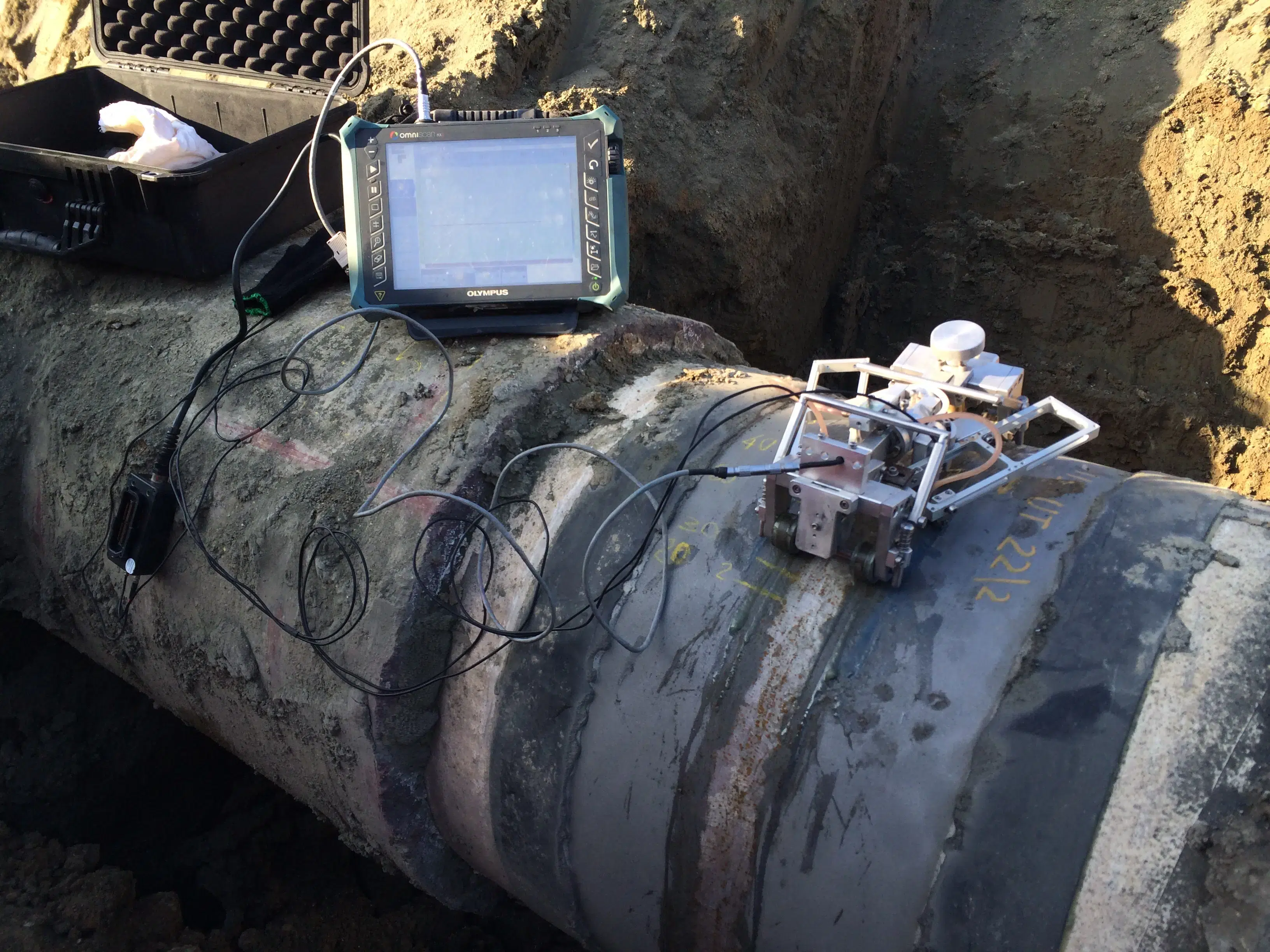watch scans Left ( L) and Rigth (R) side .
G1 , G2, G3 are the geometries ( G ) ; d1, d2 , d3 , d4 are defects LOF type ( d ). Part of these defects coexist with a geometry : d1 with G1, G2 with d3 , G3 with D4 . The observation point is the discriminating factor between defect and geometry , so the scanning position R-d4 (scan right pointing d4) shows the defect d4 , L-G3 (scan Left pointing G3) shows the G3 geometry. The defect d4 is the continuation of geometry G3 and vice versa, then scan position Rd-4 and L-G3 pointing the same welding area. And so on for the other scans represented.
Because of misalignment root and esternal cap paths are lengthened or shortened compared to a normal joint. For the same reasons, the projection of the cap root path – normally a few millimeters beyond the CL – will be in C.L. position.
The signature of this situation is the absence of any signal in the root scanning position R-d2: if there is a signal generated this signal is unequivocally defect d2.
Scanning with straight beam probe – often underestimated – provides additional information on the status of the root. In case of a joint regularly aligned and penetrated (P-Scan), we have the rapid sequence with 3 signals 10-12-10 path. If the joint is not penetrated ( IP-Scan ) the paths become 10 – 8-10 (reduction of thickness at the center, instead of increase), with the same dynamic. In the case of misalignment ( M-scan) path reduce at first sight similar to IP-scan, but the dynamic is different: after a rapid change from the path from 10 to 8,will follow a phase of slow variation of the thickness, without the dynamic net of a third signal as observed in IP-scan.
The evaluation of misalignment normally is done not with UT examination bat with visual/dimensional inspection according to the construction requirements.
Greetings
